Every season, I let a few of my radish plants flower and seed. Some I leave to collect seed for next season, and some I simply forget about in the shadow of other plants.
So it’s always a good surprise when I find a tangled mess of vines like this in the garden and they end up being over-ripened radish plants—plants that had grown over 4 feet tall, full of little white blossoms and slender green pods.
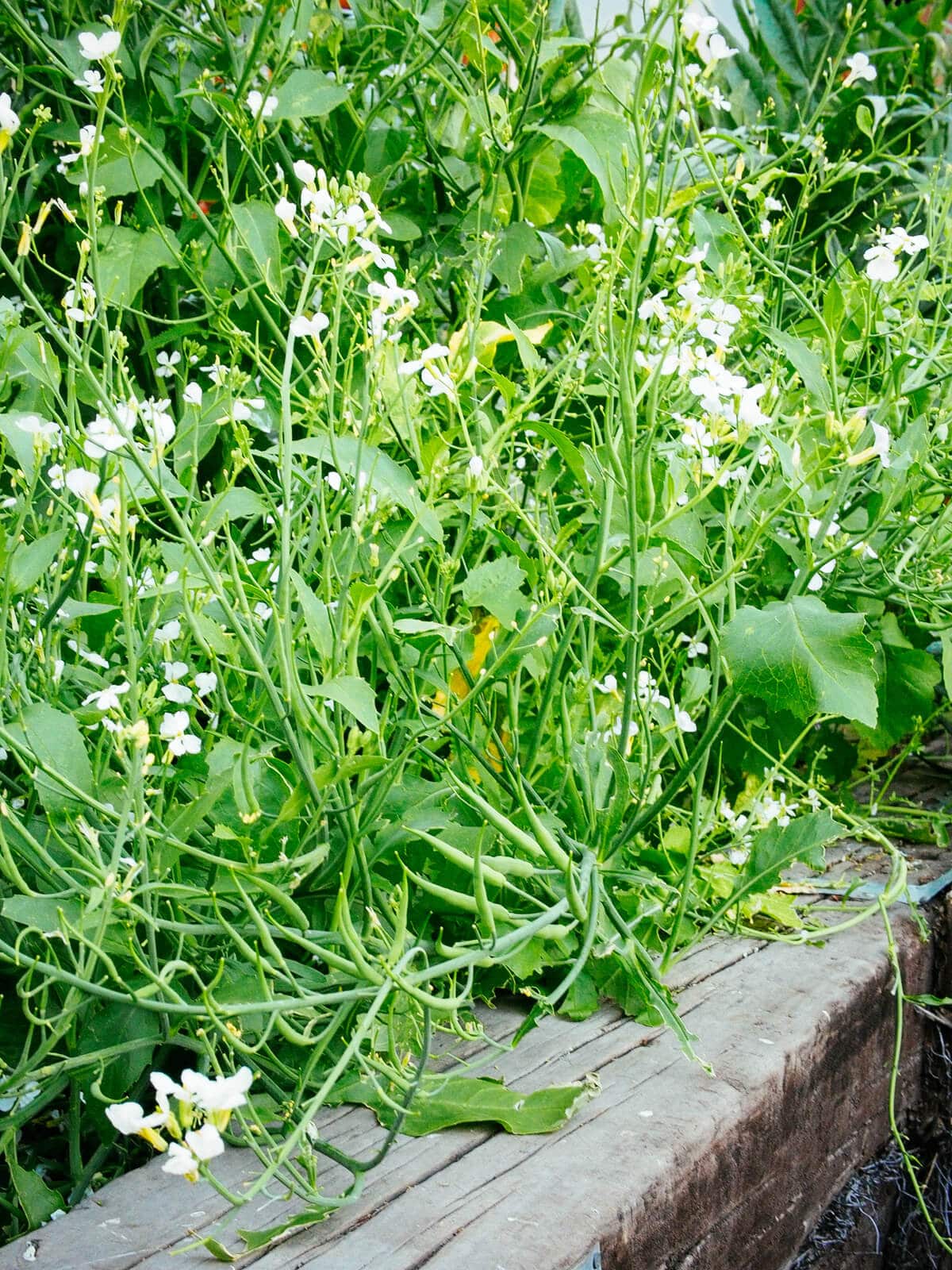
At this stage, most people consider the plants done for the season. The radishes themselves have grown too woody or fibrous to eat, and the leaves have withered or become damaged by aphids and other pests.
But gardeners in the know, know that this isn’t the end of the plants. Far from it.
Those pointy green seed pods are actually a last hurrah from the radish plant, a harvest well worth the wait because the pods are so uniquely delicious.
You read that right: you can eat radish seed pods.
Read more: Other common plants you grow that you didn’t know were edible
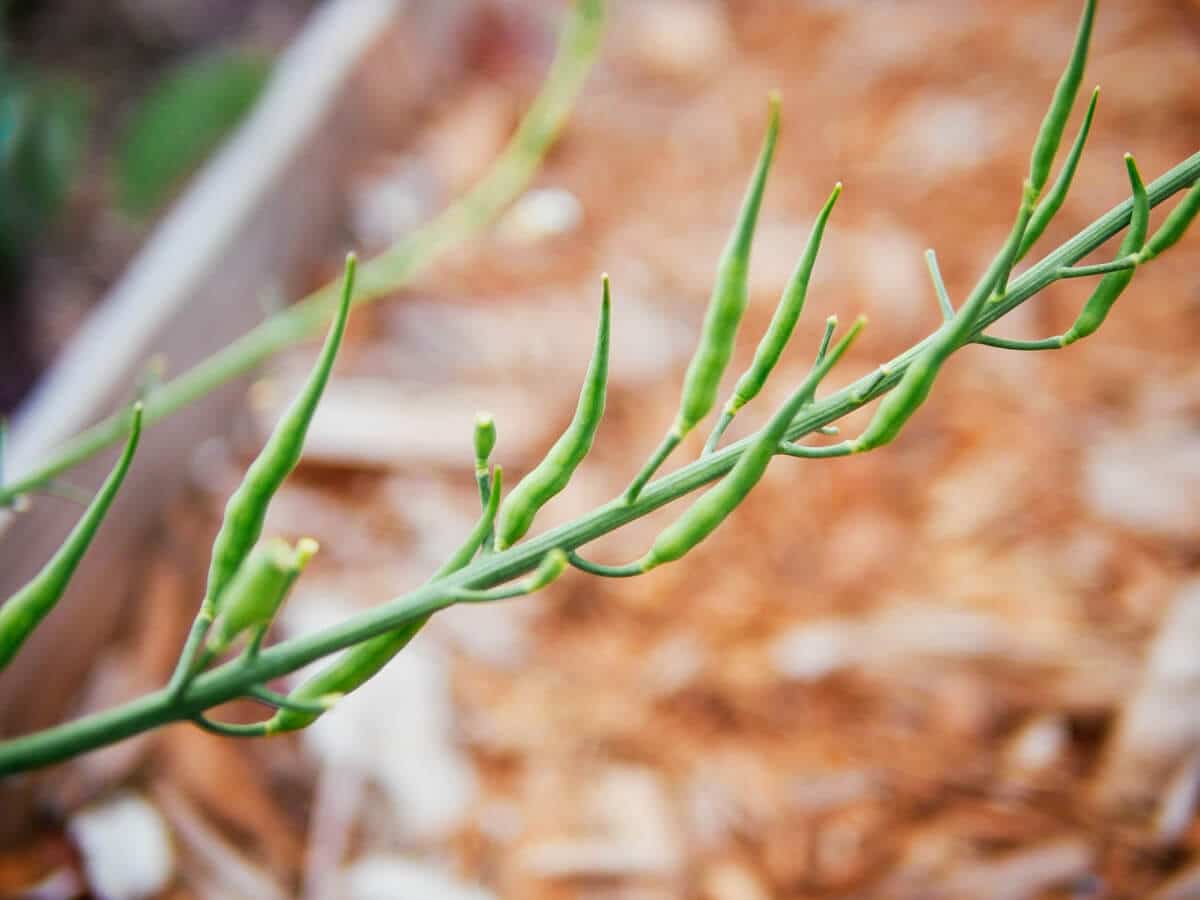
Look for the pointy pods
Radishes sown from spring to summer will flower from mid-summer to fall. In mild winter climates, radishes can be sown in fall for an early spring harvest—after which the plants will bolt and produce seed pods in late spring.
The crisp green pods appear a few weeks after radishes are past their picking prime, so if you sowed more radishes than you can eat, none of that is wasted—you just get a bonus crop at the end of the season.
Radish seeds form inside thin, elongated pods on tall, upright stems that reach 4 to 5 feet. A single flower stalk can produce several dozen seed pods in various stages of maturity, so it doesn’t take very many radish plants to yield a sizable harvest of pods.
Each radish pod is 1 to 2 inches in length with a narrow cylindrical shape that tapers to a point.
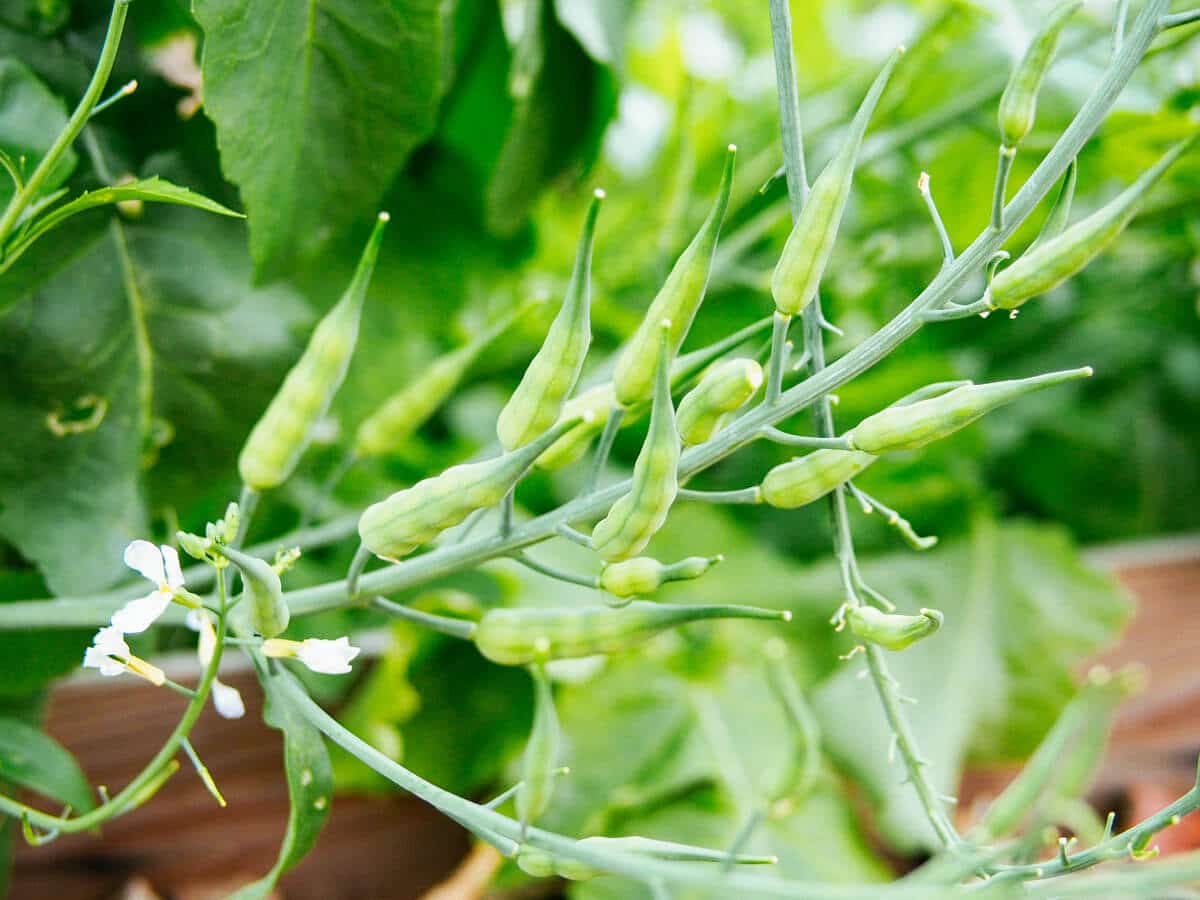
By collecting and eating the green seed pods, you can stretch the harvest period for radishes much longer than usual. Think of it as no-waste gardening! (Which is one of my favorite lazy gardening strategies for getting more food out of my garden without planting more plants.)
If you leave the pods to ripen on the stems (a few weeks after they appear), they’ll dry up, turn yellow or brown, and split open to reveal tiny black or brown seeds.
Related: How to save and store seeds from the garden
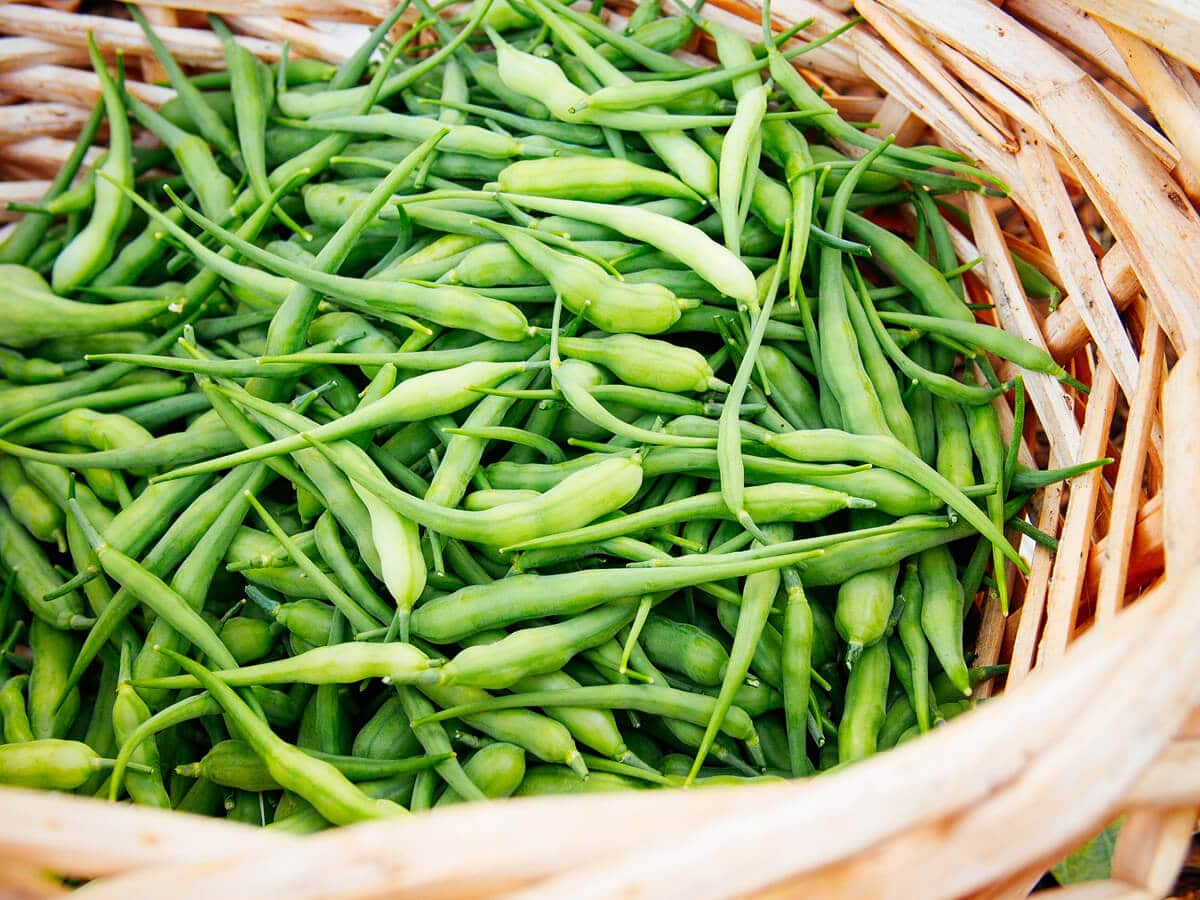
Disclosure: If you shop from my article or make a purchase through one of my links, I may receive commissions on some of the products I recommend.
Radish varieties that produce edible seed pods
All radish plants form edible seed pods (even wild radishes, if you come across them on a hike), and there is even an heirloom variety called Rat’s Tail radish grown specifically for its large, tender seed pods.
But I’ve let all types of radishes—from the hefty watermelon radishes and Japanese daikons of winter to the popular and petite French Breakfast and Easter Egg Blend varieties of spring—flower at the end of the season, and they produced delicious pods for weeks.

How to harvest
Gather the pods when they’re still fresh and green, but after the seeds inside start developing. The radish pods will bulge a bit (kind of like pea pods) and grow fleshier, which makes for better eating.
You can hand-pick pods in the garden by pulling them off the stems, or cut off the entire stalk to harvest the pods in your kitchen.
Most stalks will have radish pods in all stages of maturity, and personally, I only go for ones that are well-formed, as they pack in more flavor and texture.
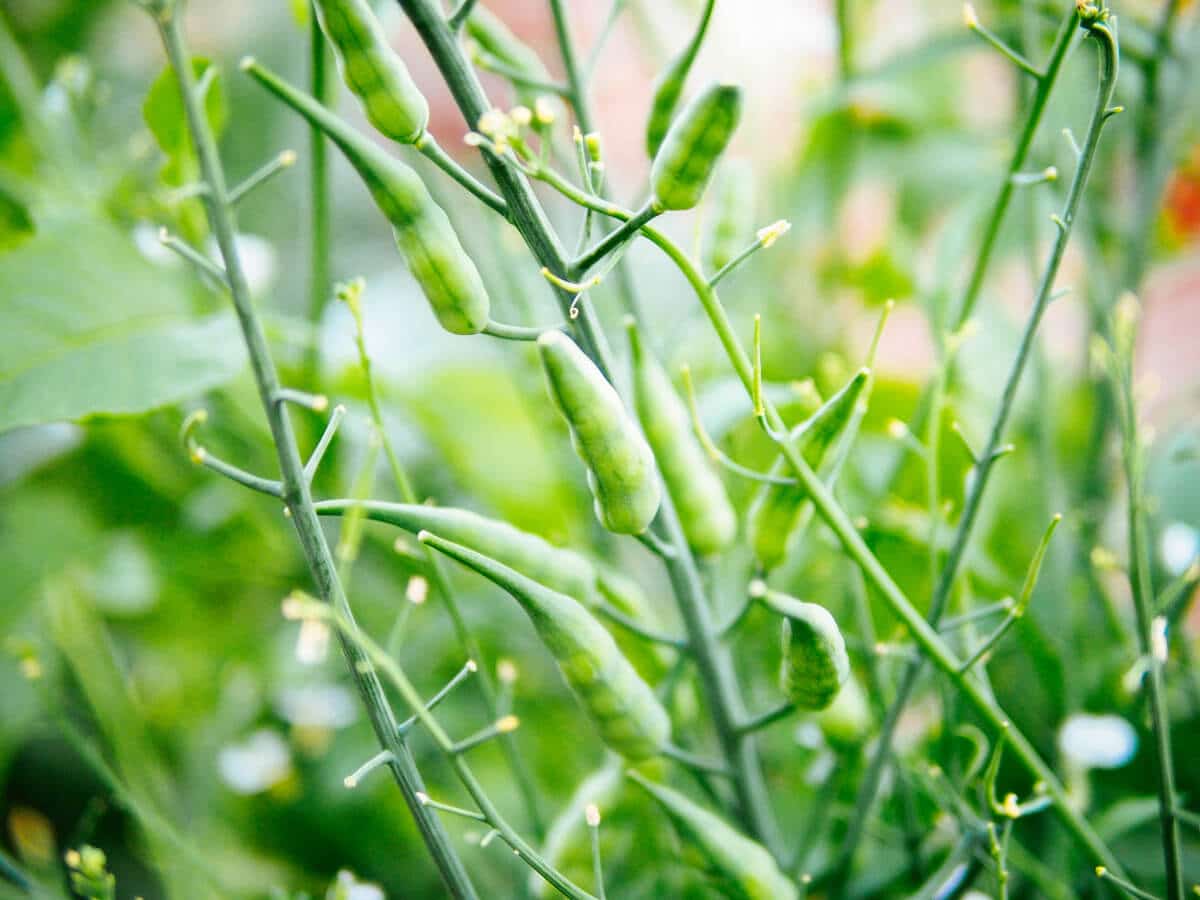
So what do they taste like?
Radish pods taste just like radishes, but more concentrated in flavor. They range from mild to spicy (depending on the variety) but are always crunchy and fresh-tasting. They’re best eaten raw, either straight off the stem or pickled in a jar.
Seed pods from winter radishes tend to be milder in flavor than seed pods from spring and summer radishes, but their texture is the same—crisp and not stringy at all.
Sometimes I snip off the tip if it’s particularly long and pointy, but the entire pod is edible.
Read next: The difference between winter radishes and spring radishes
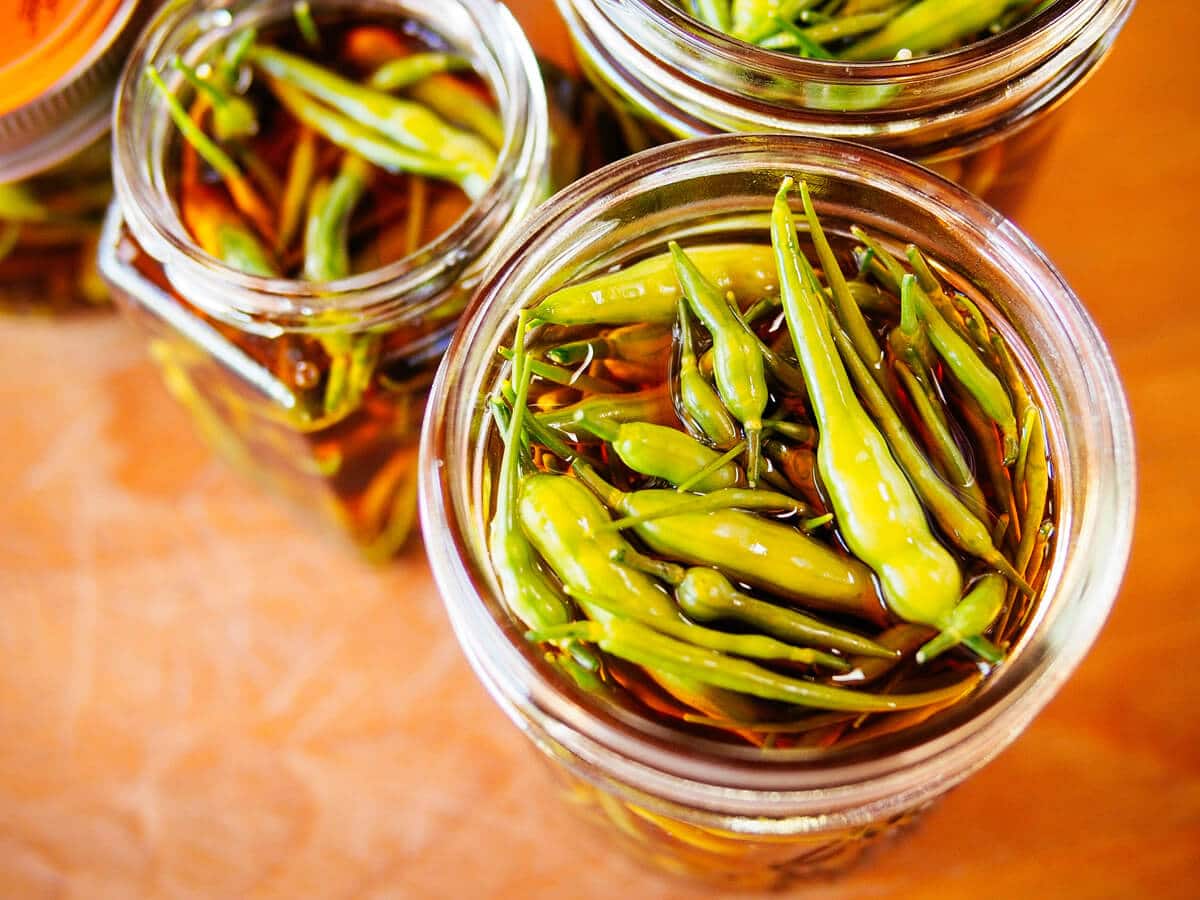
What to do with radish pods
Radish pods can be used anywhere you’d normally use radishes: leafy salads, taco toppings, pitas and wraps.
But my favorite way to eat them is to pickle them first. They taste amazing on their own, and even more amazing as a side dish to a bed of rice and some grilled meats.
You can chop up a handful of pickled radish pods to use like capers in an omelet or noodle bowl, or skewer them on a toothpick to garnish a bloody mary and add a peppery bite.
Try this: Sweet and spicy quick-pickled radishes
Make a few jars of radish seed pickles to have on hand as last-minute gifts and potluck contributions—nobody ever knows what they are, and I love explaining how the entire radish plant (from the roots to the greens to the seeds) is edible!
Did you know?
This recipe is a favorite from The No-Waste Vegetable Cookbook. I have more recipes for radishes, radish leaves, and the tops and tails of many ordinary vegetables that become extra ordinary once you realize what you can actually use from them!
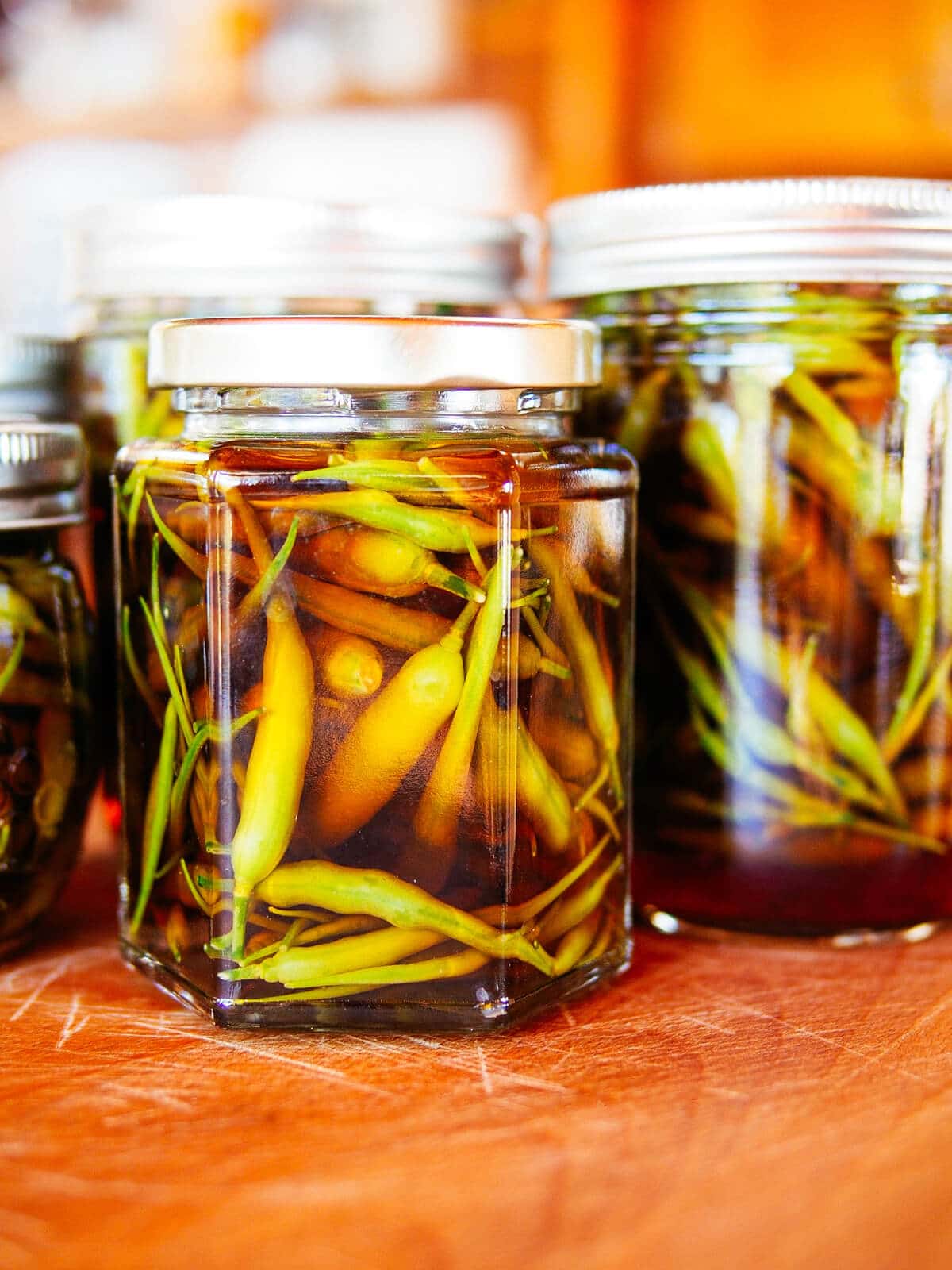
Pickled Radish Seed Pods
Makes 3 cups
Ingredients
1 cup water
1/2 cup rice vinegar
1/2 cup white wine vinegar
1/2 cup sugar
1/2 tablespoon kosher salt
2 heaping cups radish seed pods
Instructions
In a small saucepan over medium heat, combine the water, rice vinegar, wine vinegar, sugar, and salt and stir until the grains are dissolved. Let the brine cool to room temperature.
Pack the radish pods into jars and pour the brine over them, making sure the pods are fully submerged.
Pickle at room temperature, out of direct sunlight, for at least 4 hours before serving. For best flavor, pickle overnight in the fridge.
When you’re done with the pickles: Tips on how to use up leftover pickle brine
Pickled Radish Seed Pods
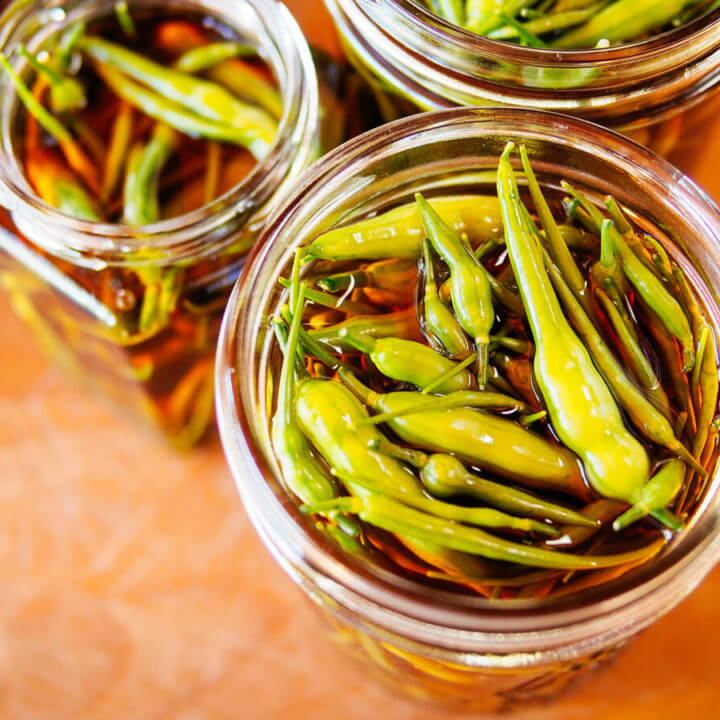
Just because your radish plants have started flowering doesn't mean they're done for the season. Harvest the green seed pods (yes, they're edible!) and pickle them for one last hurrah from your crop.
Ingredients
- 1 cup water
- 1/2 cup rice vinegar
- 1/2 cup white wine vinegar
- 1/2 cup sugar
- 1/2 tablespoon kosher salt
- 2 heaping cups radish seed pods
Instructions
- In a small saucepan over medium heat, combine the water, rice vinegar, wine vinegar, sugar, and salt and stir until the grains are dissolved. Let the brine cool to room temperature.
- Pack the radish pods into jars and pour the brine over them, making sure the pods are fully submerged.
- Pickle at room temperature, out of direct sunlight, for at least 4 hours before serving. For best flavor, pickle overnight in the fridge.
Nutrition Information:
Yield:
6Serving Size:
1/2 cupAmount Per Serving: Calories: 78Total Fat: 0gSaturated Fat: 0gTrans Fat: 0gUnsaturated Fat: 0gCholesterol: 0mgSodium: 546mgCarbohydrates: 18gFiber: 1gSugar: 17gProtein: 0g
Nutrition information isn’t always accurate.
This post updated from an article that originally appeared on April 22, 2013.


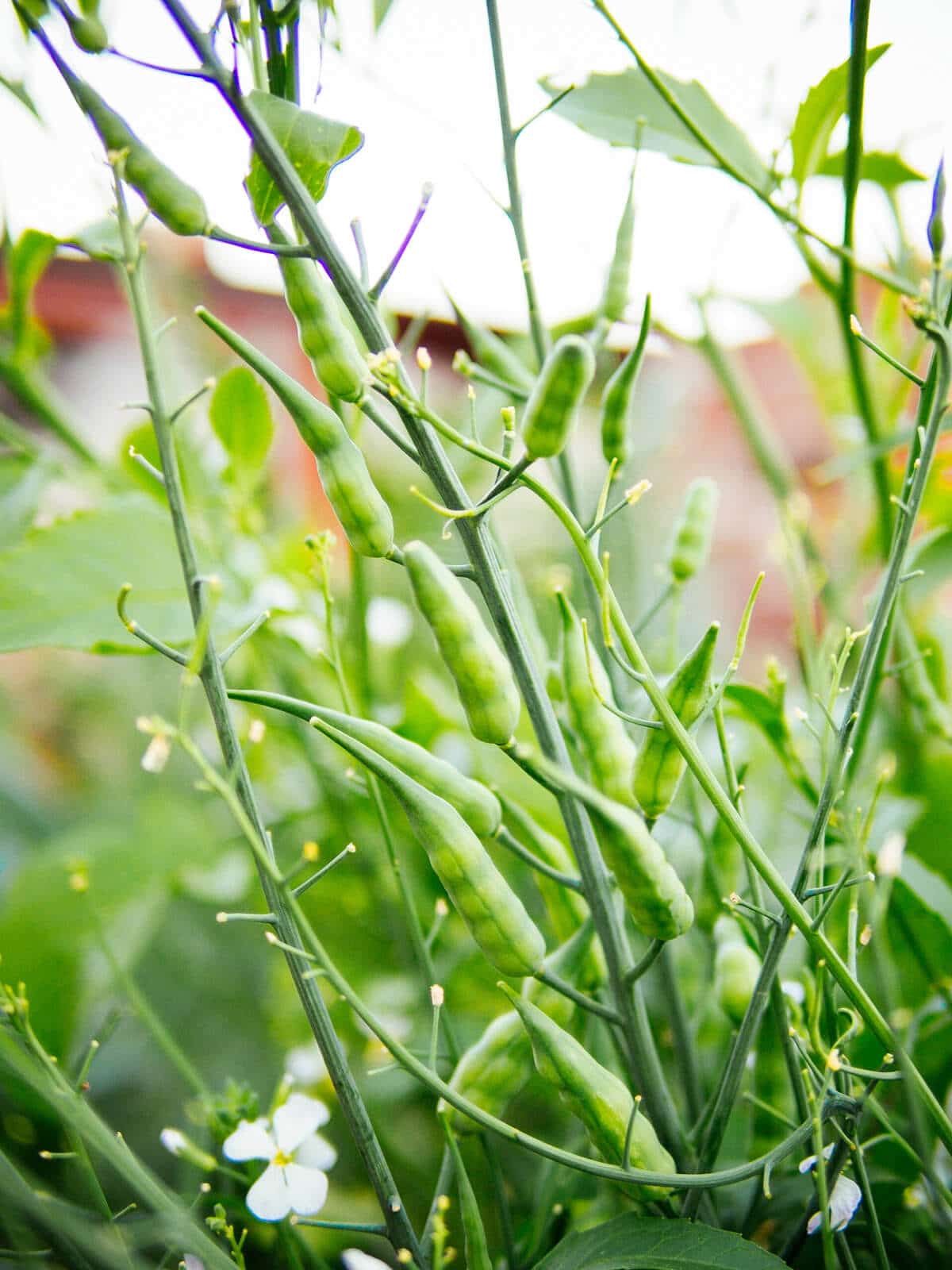













This is the first time I’ve had any radishes survive long enough to bolt, and only two, but it’s kinda funny that’s when I got your article. None of the pods have gotten anywhere near that big, and it has actually been 4-6 months since I planted these radishes, and they just started bolting a few weeks ago. Hottest driest summer we’ve had, don’t know how they survived, or why these kinda things seem to happen / grow so much faster for everyone else.
Anyway, other than raw also had them sauteed, baked, fried, deep fried, and burnt nearly to a crisp. 😄 Blistered with a little oil and salt and these are really great, (and easier on my stomach apparently, versus raw.) 😀
lovely! I have a bunch of these I have growing ( we normally eat them like green beans). Have you had any luck with water-bath canning for these?
I get the part about leaving them overnight, but for how long will they keep?
Not everybody is going to enjoy the radish pots, but almost everyone will enjoy the flowers I take the flowers of all of my crops, including the Asian vegetables, radishes, turnup you name it and you can make a great salad with just them and it’s beautiful those flowers also make nice little garnishes for
Their floating and won’t stay submerged. How do I fix this
And will it spoil??
Thanks
Hi, and thanks for this article.
I didn’t realize radishes would bolt, and form flowers and then pods. I always pick them before they’ve had the opportunity to flower and then pod up. Fascinating!
Related question: when my leaf lettuce bolts & flowers, I generally pull it up & put all in the compost. If I leave the lettuce in the ground, will edible pods form after the flowering stage? Or, if I don’t eat the pods, may I pick the pods (green or after they dry on the plant?) and then harvest seeds from the pod for future planting?
Thank you!
Lettuce plants do not form seed pods as far as I’m aware, all of mine have always produced seeds from the flowers themselves.
Lettuce makes seeds more like dandelion than peas (or radish)
And yes I’ve harvested lettuce seed for planting
how long do your pickles keep from this recipe?
How do you prepare the soil for radish seeds, and in the UK the weather is psychotic. My garden soil looks nothing like soil, it’s rocky, stony and my previous radish harvest was ruined by bugs, leaf eaters etc. I didn’t feel like eating it.
Radishes are more forgiving than larger root vegetables like carrots and beets, since radishes are smaller, but they still need a few inches of good soil to grow well. I recommend mixing in some aged compost with your existing soil to improve its texture and help with moisture retention. You can also grow radishes in containers.
He visto esta planta que no conocía y tu receta, al encontrarla me ha encantado gracias por la información
You’re welcome! Thank you for reading!
Have you tried bok choi or tatsoi pods? I have both bolting in my garden and I’m eyeing them up for fermentation.
In my experience, they’re thinner, more bitter, and not as tender as radish pods, but there may be some variation among different varieties. I suggest trying them raw first and seeing how you like the flavor before you put any time into pickling them.